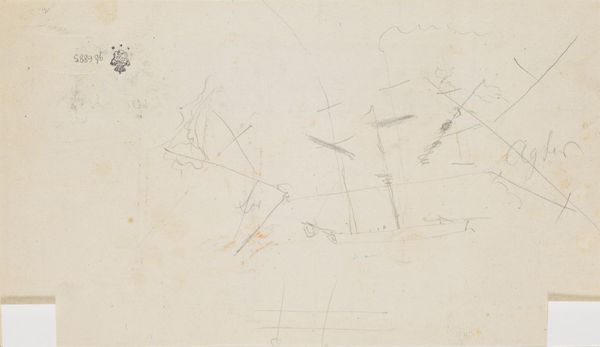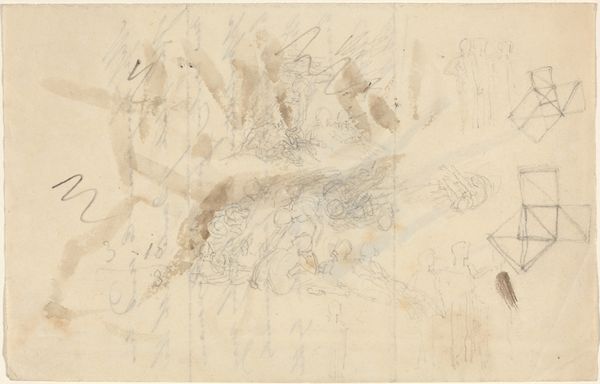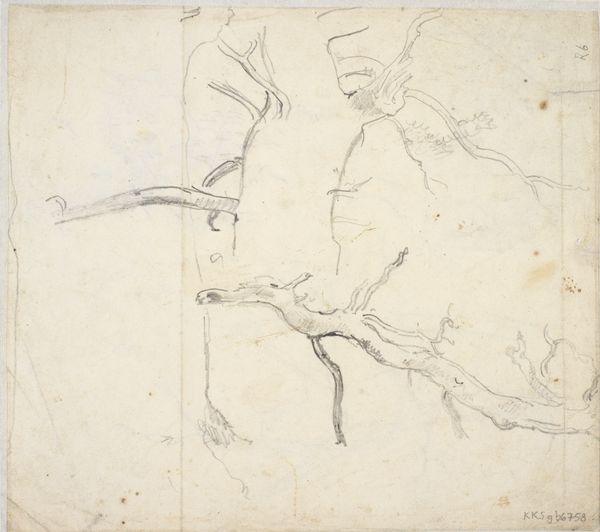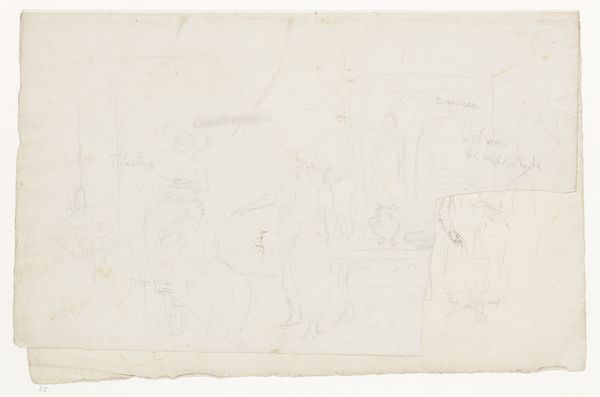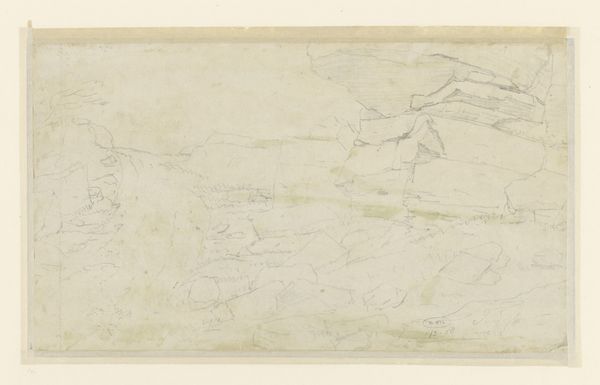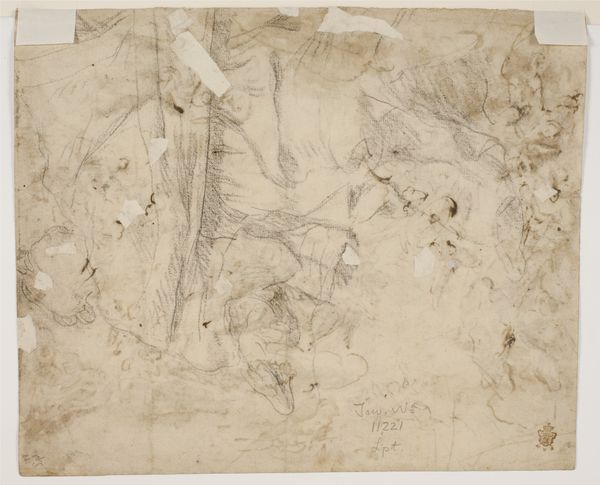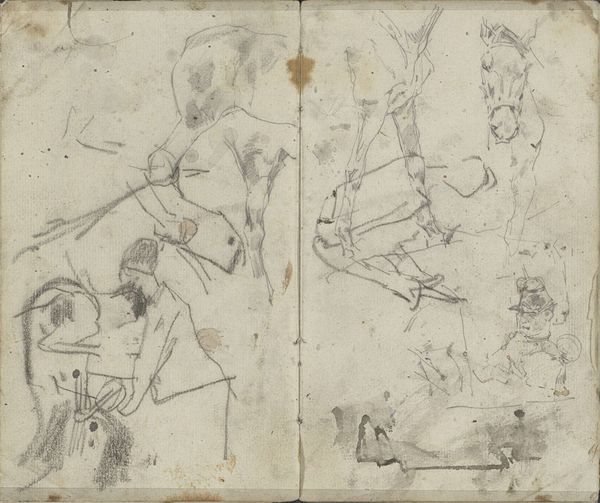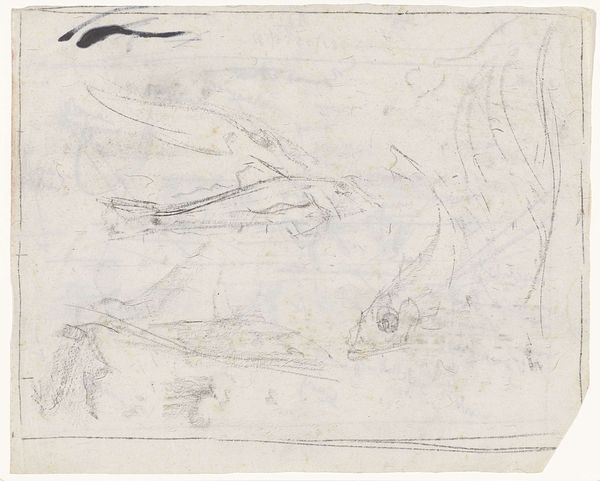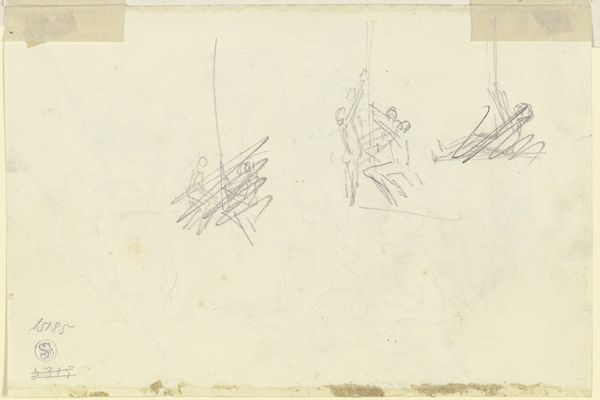
drawing, paper, pencil
drawing
figuration
paper
pencil
Dimensions: 188 mm (height) x 239 mm (width) (bladmaal)
Curator: Here we have "Kompositionsstudie til Langelinje-billedet," a compositional study dating from 1923 to 1927, conceived by the Danish artist Edvard Weie. Crafted with pencil on paper, it’s currently held in the collection of the SMK, the Statens Museum for Kunst. What is your first impression? Editor: My first reaction is a feeling of quiet motion. Even with its spare use of line, the artist creates this powerful sense of figures moving within a hazy, dreamlike space. It feels both intimate and vaguely unsettling. Curator: It's interesting you say unsettling, because at first glance, it just looks like sketches. But thinking about the time period in Denmark, the interwar years were anything but stable. There's this emerging tension between a nostalgic longing for simpler times and the accelerating pace of modern life. Editor: I think you're absolutely right, and those tensions manifest in the artwork’s subject, too: the depiction of promenading figures along the Langelinje waterfront. What sort of codes and rules existed about who belonged in that space, and who was kept out? It begs a larger discussion about public access and urban inequalities. Curator: That's a fantastic point. Langelinje was, and is, a public space, yet the way Weie frames the figures gives them an almost spectral quality. Their anonymity allows viewers to question who is granted visibility and who remains unseen. These drawings became Weie's preparation for his 1930’s painting, "Langelinie," which shows almost exactly this composition. Editor: Looking at it through a contemporary lens, these faceless figures can also represent the loss of individual identity within the machinery of modern society. Curator: Or perhaps a defense against such anonymity, through subtle acts of claiming public space through fashion and behavior, claiming it for one's self, if you will. These subtle social performances taking place against the backdrop of urban life. Editor: I find the incompleteness of the sketch to be intriguing in its own way. There are infinite possibilities hinted at within the figures. The way that it remains open-ended speaks to art's power to question rather than affirm, and to prompt social engagement. Curator: This exercise reminds me again that art exists as both artifact and instigator. Editor: Absolutely, it reminds me how the socio-historical influences behind its creation continue to fuel critical discourse today.
Comments
No comments
Be the first to comment and join the conversation on the ultimate creative platform.
